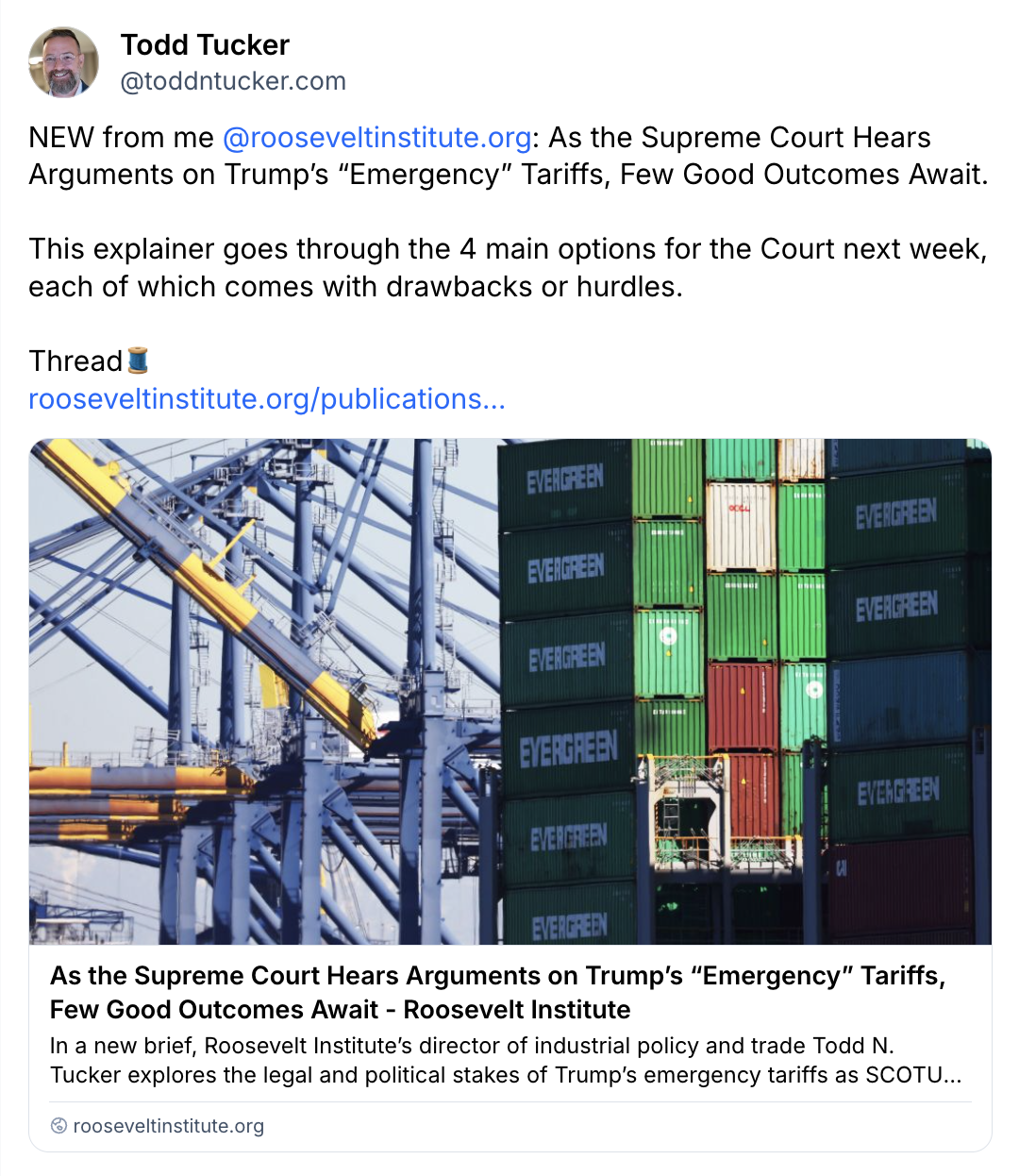161 Ways to Make Government More Effective
October 31, 2025
Plus, an explainer of the health insurance credits at stake in the shutdown
The Roosevelt Rundown features our top stories of the week.

The East Wing of the White House is demolished by work crews on October 23, 2025. (Alex Wong/Getty Images)
“I Don’t Want to Go Back to a Government I Entered in 2020–21”
“Frankly, our democratic institutions have broken trust with most people in this country,” Roosevelt President and CEO Elizabeth Wilkins told Michigan Public’s Stateside last week, as part of her listening tour stop in Michigan.
“Having been in and out of government for my whole career—government was broken long before DOGE came into the picture,” Wilkins said. “The structures are not built to manage today’s economy.”
Her comments echo the findings of our latest institutional report, in which authors Hannah Garden-Monheit and Tresa Joseph collect the testimonies of more than 45 former Biden-Harris administration officials for an honest reckoning with the structural hurdles and institutional failures they encountered in government. The report provides 161 recommendations they offered for a future administration to reimagine a more effective and responsive federal government.
“We cannot build back what we had before. I don’t want to go back to a government that I entered in 2020–21,” Wilkins told Stateside. “I want to go back to a government that is willing to take risks, that believes that its mission is just as urgent as the challenges that people face in their everyday lives, that is not captured by corporate lobbyists but knows how to do public engagement in a way that targets input from the people that it’s supposed to help.”
Read the report: Building a More Effective, Responsive Government: Lessons Learned from the Biden-Harris Administration
Why Everyone’s Premiums Are Going Up This Open Enrollment Season
As the government shutdown hits the 30-day mark, November 1 looms large as a deadline for Supplemental Nutrition Assistance Program (SNAP) benefits and the start of open enrollment on the Affordable Care Act (ACA) marketplace.
Hanging in the balance is the fate of the enhanced premium tax credits, essential subsidies to health insurance plans purchased on the ACA marketplace. Without these credits, health insurance would be unaffordable for millions of Americans, leading them to drop coverage entirely.
“The first people to leave will be relatively younger and healthier. Those who stay behind will be relatively sick. As a result, insurers will have to raise their premiums because the average cost of insuring sicker people is higher (which can set off further cycles of pool shrinking and cost increases),” writes Stephen Nuñez, Roosevelt’s stratification economics director, in a new blog post. “In fact, in anticipation of the expiration of the enhanced tax credits, insurers are already promising enormous increases in premiums. And others may throw in the towel altogether.”
The result? Fewer, more expensive insurance options for everyone.
Read the post: “What’s at Stake in the Shutdown Fight: Enhanced Premium Tax Credits, Explained”
And watch our new explainer video:
What We’re Talking About
What We’re Reading
- On trade: Roosevelt’s Todd N. Tucker joined the Pitchfork Economics podcast to discuss how trade policy can build the middle class: “Trade should serve industrial policy, worker power, and democracy—not the other way around . . . A pro-worker, pro-production trade policy is just a pro-America policy. It’s red, white, and blue—not red or blue.”
- On financial oversight: Roosevelt’s Brad Lipton joined a NOTUS panel to discuss blind spots in economic oversight: “It isn’t supposed to be everyday Americans’ job to be looking out for the next financial crisis. That’s what we have government for.”
- On employment: Despite economic messaging focused on the plight of men and male-dominated industries, it would be a mistake to assume that women are doing much better in the labor force, The New Republic reports.
- “The long-term picture is definitely that men’s employment and labor force participation has been declining pretty steadily for the last 40 years and women were rising for a while but have basically been treading water since about 2000,” Roosevelt’s Mike Madowitz said.
